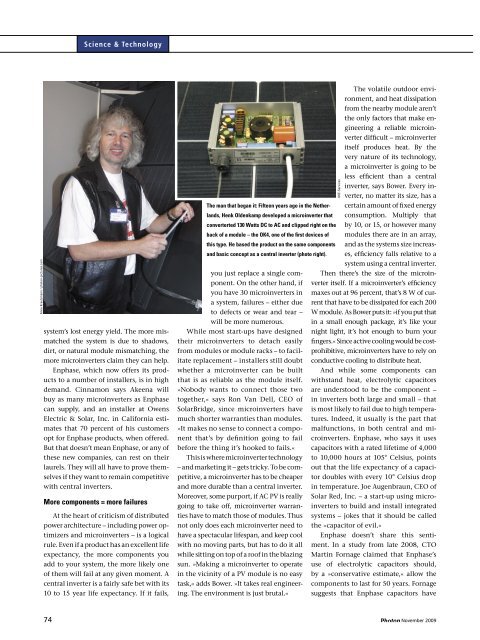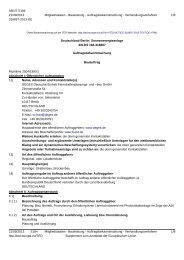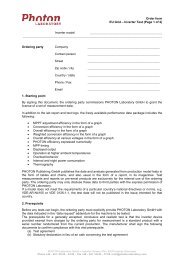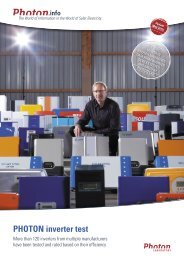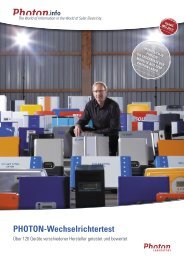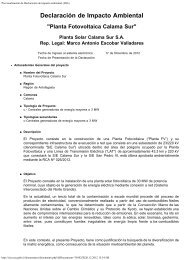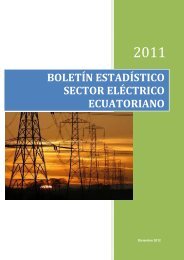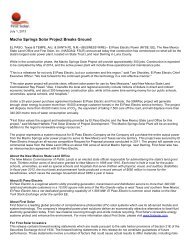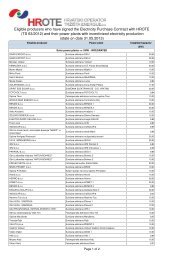INTRODUCTORY SPECIAL INTRODUCTORY ... - PHOTON Info
INTRODUCTORY SPECIAL INTRODUCTORY ... - PHOTON Info
INTRODUCTORY SPECIAL INTRODUCTORY ... - PHOTON Info
Create successful ePaper yourself
Turn your PDF publications into a flip-book with our unique Google optimized e-Paper software.
Anne Kreutzmann / photon-pictures.com<br />
74<br />
Science & Technology<br />
system’s lost energy yield. The more mis-<br />
matched the system is due to shadows,<br />
dirt, or natural module mismatching, the<br />
more microinverters claim they can help.<br />
Enphase, which now offers its prod-<br />
ucts to a number of installers, is in high<br />
demand. Cinnamon says Akeena will<br />
buy as many microinverters as Enphase<br />
can supply, and an installer at Owens<br />
Electric & Solar, Inc. in California esti-<br />
mates that 70 percent of his customers<br />
opt for Enphase products, when offered.<br />
But that doesn’t mean Enphase, or any of<br />
these new companies, can rest on their<br />
laurels. They will all have to prove them-<br />
selves if they want to remain competitive<br />
with central inverters.<br />
More components = more failures<br />
At the heart of criticism of distributed<br />
power architecture – including power op-<br />
timizers and microinverters – is a logical<br />
rule. Even if a product has an excellent life<br />
expectancy, the more components you<br />
add to your system, the more likely one<br />
of them will fail at any given moment. A<br />
central inverter is a fairly safe bet with its<br />
10 to 15 year life expectancy. If it fails,<br />
The man that began it: Fifteen years ago in the Nether-<br />
lands, Henk Oldenkamp developed a microinverter that<br />
converterted 130 Watts DC to AC and clipped right on the<br />
back of a module – the OK4, one of the first devices of<br />
this type. He based the product on the same components<br />
and basic concept as a central inverter (photo right).<br />
you just replace a single com-<br />
ponent. On the other hand, if<br />
you have 30 microinverters in<br />
a system, failures – either due<br />
to defects or wear and tear –<br />
will be more numerous.<br />
While most start-ups have designed<br />
their microinverters to detach easily<br />
from modules or module racks – to facil-<br />
itate replacement – installers still doubt<br />
whether a microinverter can be built<br />
that is as reliable as the module itself.<br />
»Nobody wants to connect those two<br />
together,« says Ron Van Dell, CEO of<br />
SolarBridge, since microinverters have<br />
much shorter warranties than modules.<br />
»It makes no sense to connect a compo-<br />
nent that’s by definition going to fail<br />
before the thing it’s hooked to fails.«<br />
This is where microinverter technology<br />
– and marketing it – gets tricky. To be com-<br />
petitive, a microinverter has to be cheaper<br />
and more durable than a central inverter.<br />
Moreover, some purport, if AC PV is really<br />
going to take off, microinverter warran-<br />
ties have to match those of modules. Thus<br />
not only does each microinverter need to<br />
have a spectacular lifespan, and keep cool<br />
with no moving parts, but has to do it all<br />
while sitting on top of a roof in the blazing<br />
sun. »Making a microinverter to operate<br />
in the vicinity of a PV module is no easy<br />
task,« adds Bower. »It takes real engineer-<br />
ing. The environment is just brutal.«<br />
OKE-Services<br />
Then there’s the size of the microin-<br />
verter itself. If a microinverter’s efficiency<br />
maxes out at 96 percent, that’s 8 W of cur-<br />
rent that have to be dissipated for each 200<br />
W module. As Bower puts it: »if you put that<br />
in a small enough package, it’s like your<br />
night light, it’s hot enough to burn your<br />
fingers.« Since active cooling would be cost-<br />
prohibitive, microinverters have to rely on<br />
conductive cooling to distribute heat.<br />
And while some components can<br />
withstand heat, electrolytic capacitors<br />
are understood to be the component –<br />
in inverters both large and small – that<br />
is most likely to fail due to high tempera-<br />
tures. Indeed, it usually is the part that<br />
malfunctions, in both central and mi-<br />
croinverters. Enphase, who says it uses<br />
capacitors with a rated lifetime of 4,000<br />
to 10,000 hours at 105° Celsius, points<br />
out that the life expectancy of a capaci-<br />
tor doubles with every 10° Celsius drop<br />
in temperature. Joe Augenbraun, CEO of<br />
Solar Red, Inc. – a start-up using micro-<br />
inverters to build and install integrated<br />
systems – jokes that it should be called<br />
the »capacitor of evil.«<br />
The volatile outdoor envi-<br />
ronment, and heat dissipation<br />
from the nearby module aren’t<br />
the only factors that make en-<br />
gineering a reliable microin-<br />
verter difficult – microinverter<br />
itself produces heat. By the<br />
very nature of its technology,<br />
a microinverter is going to be<br />
less efficient than a central<br />
inverter, says Bower. Every in-<br />
verter, no matter its size, has a<br />
certain amount of fixed energy<br />
consumption. Multiply that<br />
by 10, or 15, or however many<br />
modules there are in an array,<br />
and as the systems size increas-<br />
es, efficiency falls relative to a<br />
system using a central inverter.<br />
Enphase doesn’t share this senti-<br />
ment. In a study from late 2008, CTO<br />
Martin Fornage claimed that Enphase’s<br />
use of electrolytic capacitors should,<br />
by a »conservative estimate,« allow the<br />
components to last for 50 years. Fornage<br />
suggests that Enphase capacitors have<br />
November 2009


